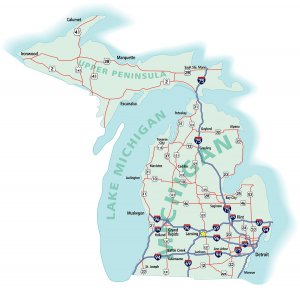
What Are Your Needs for a First Aid Kit?
How to Make a First Aid Kit
1. Get a First Aid-Ready Reference
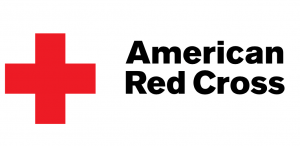 First things first. Go to the American Red Cross and download their free First Aid/CPR/AED manual or their Basic First Aid manual. Or get their free app to keep on your phone or tablet. It has step-by-step instructions to connect directly to your local emergency service and has free resources on everything from CPR to broken bones and heart attacks.
First things first. Go to the American Red Cross and download their free First Aid/CPR/AED manual or their Basic First Aid manual. Or get their free app to keep on your phone or tablet. It has step-by-step instructions to connect directly to your local emergency service and has free resources on everything from CPR to broken bones and heart attacks. 2. Boo Boo First Aid Salve
To make your own Healing Neosporin Salve:
3. Witch Hazel
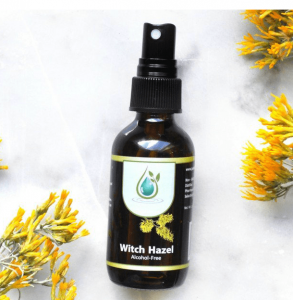 Witch Hazel is one of my favorite versatile remedies! It's an astringent herb that is great for treating inflammation or swelling. If anyone gets poison ivy, sunburn, bug bites, cuts, or scrapes, witch hazel can help. Some over-the-counter brands contain alcohol, so it may sting a little when applied, but it can promote more rapid healing and I can use it to stop any minor bleeding from small grazes and cuts.
Witch Hazel is one of my favorite versatile remedies! It's an astringent herb that is great for treating inflammation or swelling. If anyone gets poison ivy, sunburn, bug bites, cuts, or scrapes, witch hazel can help. Some over-the-counter brands contain alcohol, so it may sting a little when applied, but it can promote more rapid healing and I can use it to stop any minor bleeding from small grazes and cuts. 4. Activated Charcoal
Here are some different ways to use activated charcoal:
5. Arnica
6. Bach Rescue Remedy
I always carry a bottle in my carry-on when I travel because I tend to feel anxious when I fly. But for first aid, you can place a few drops directly on a cut, burn, or bruise for speedy healing.
7. Ginger
8. Essential Oils
Lavender Essential Oil
The most important oil to have in your first aid kit. It's antiviral, antibacterial, anti-itch, and good for healing minor burns, scrapes, cuts, and bumps.
Tea Tree Essential Oil
Australians consider Tea Tree oil to be “first aid in a bottle”. It's used to prevent and treat many types of infections. You can use it on rashes, scrapes, blisters, and bruises.
Peppermint Essential Oil
Use peppermint for headaches, motion sickness, congestion, upset stomach, sunburn, poison ivy, and other itches.
Chamomile Essential Oil
For sore muscles, muscle spasms, and relaxation (blend with lavender for the most relaxing bath around). I'm going to need this one after the kiddos are tucked in bed!
Include a Carrier Oil
After you have chosen the essential oils you want to bring with you, don’t forget a carrier oil. Carrier oils allow you to dilute the pure essential oil so that it doesn’t burn or irritate your skin. Always dilute essential oils because they can cause different effects when applied directly to the skin.
9. Peroxide and Epsom Salt
Hydrogen Peroxide
Epsom Salts
10. Apple Cider Vinegar
ACV Can Relieve Bug Bites
11. Bug Spray Repellent
I'm going to need a powerful bug spray and ways to treat bug bites! Michigan's Upper Peninsula is paradise, but between the months of April and October, a plague of blood-sucking insects descends and can ruin a perfectly beautiful summer day!
I wanted a bug spray minus the DEET (N,N-diethyl- meta-toluamide) used in most over-the-counter brands because it's been shown to harm the brain and nervous system function… Especially little ones are at risk! So, there are better options that have been shown to be just as, or even more effective, without the harsh side-effects. This is the one I'm using.
Also, Dr. David Williams reports in his Alternatives For the Health Conscious Individual, July 2017 newsletter, that the essential oil in catnip called nepetalactone is 10 times more effective than DEET at repelling mosquitoes.
You can buy nepetalactone at most major health food stores, some pet stores, or online. Unfortunately, it is somewhat expensive.
12. Bentonite Clay
13. Other Tools & Essentials
Finally, I'll add more traditional first-aid items to my natural first-aid kit. These are going to be the various tools and accessories to wrap, cover wounds, and provide basic first aid while indoors or outdoors.
Miscellaneous Tools for a First-Aid Kit
Whether you are attaching a bandage, removing a splinter, or cutting a piece of gauze for a wound, you will need these little tools.
This includes items like:
- Scissors
- Tweezers
- Safety pins
- Thermometer
- Flashlight
- Mouthpiece for CPR
Gauze, Bandages, Wraps & Wipes
- Gauze
- Ace bandages
- Band-Aids
- Alcohol wipes
Some other important items to include in the first aid kit are:
- Ice packs
- Batteries
- Non-latex gloves
- You may also want to consider an over-the-counter pain relief medication.
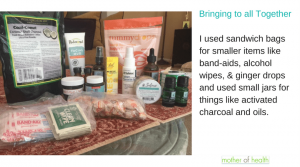
Put it All Together
Here are some options:
Large Plastic Storage Bag
Cosmetic Case for Storage
First Aid Container



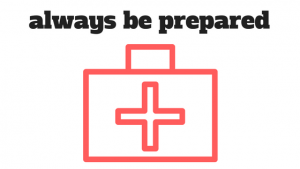
Spending time in remote places requires preperation. But, now I'm ready to have a fun, healthy, and safe trip! I hope this gave you some ideas to build your own first aid kit to meet your specific needs.
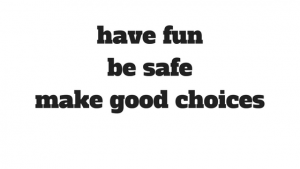
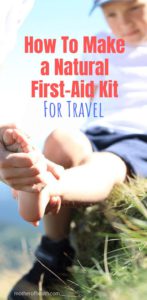
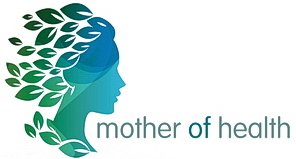
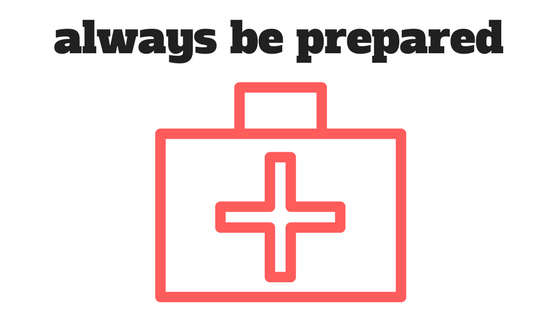
I found this article to be extremely interesting. My wife’s uncle, who is unfortunately now passed away, could walk through the forest and point out all the plants that could be used for many different remedies as well as food. It is too bad that we never wrote any of it down.
Your discussion of this first aid kit is really good. I am amazed at all the different elements you have included and most of them natural. I am impressed. I believe that I will be putting something together for our hunting camp in the mountains of West Virginia.
I have two questions. First, do the items you have discussed here have a shelf life? Second, are there any good natural products that have antibiotic qualities?
You information is informative and educational. Thank you so much for posting this.
Hi Frank,
Yes, the First Aid Boo-boo salve (that will replace Neosporin) has antibiotic qualities. I included a recipe to make your own or if you’re short on time like me, I included a link to one I like very much called Suture by Jade Bloom. Most of the items I included have a good shelf life, but just the same I’ll probably review and renew my kit each year just to be on the safe side.
I hope you were inspired to create your own First-Aid Kit for your trip to West Virginia! 🙂 Be well and have fun!
This is great. I think it is so important to have these items on hand especially for camping, hiking or even a beach day. I also include aspirin or ibuprofen in my first aid kit as well just in case myself or someone gets a headache or hurts themselves while doing an activity.
Hi Joey! Did I forget that? oh my, I’ll probably add Aleve! 🙂 Thanks for commenting.